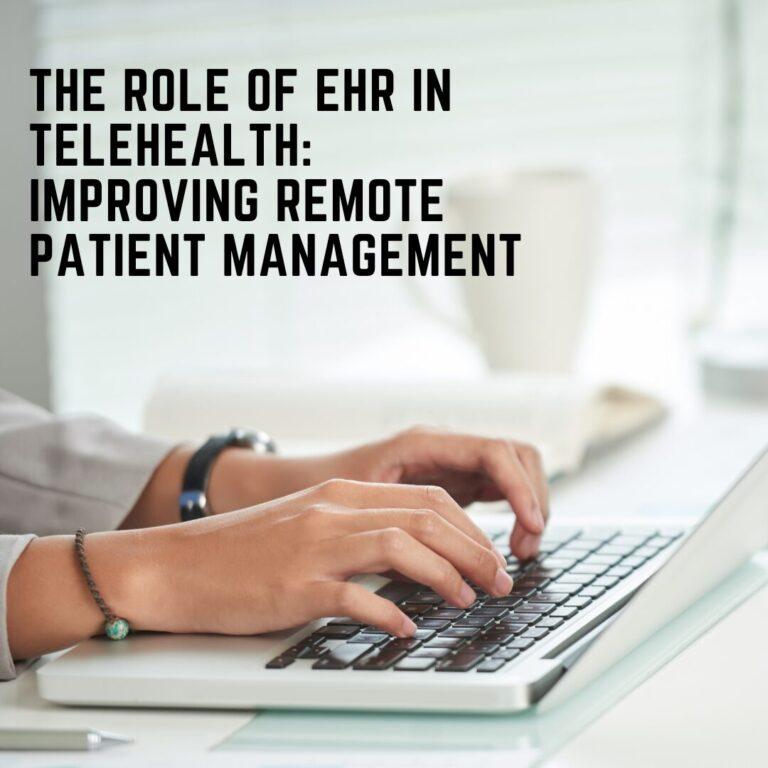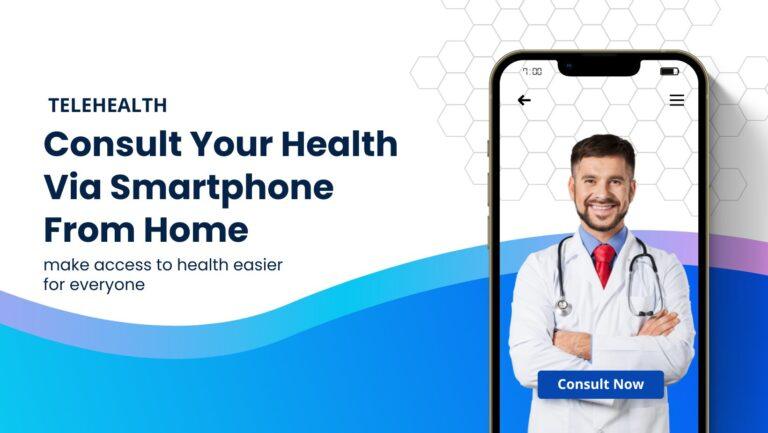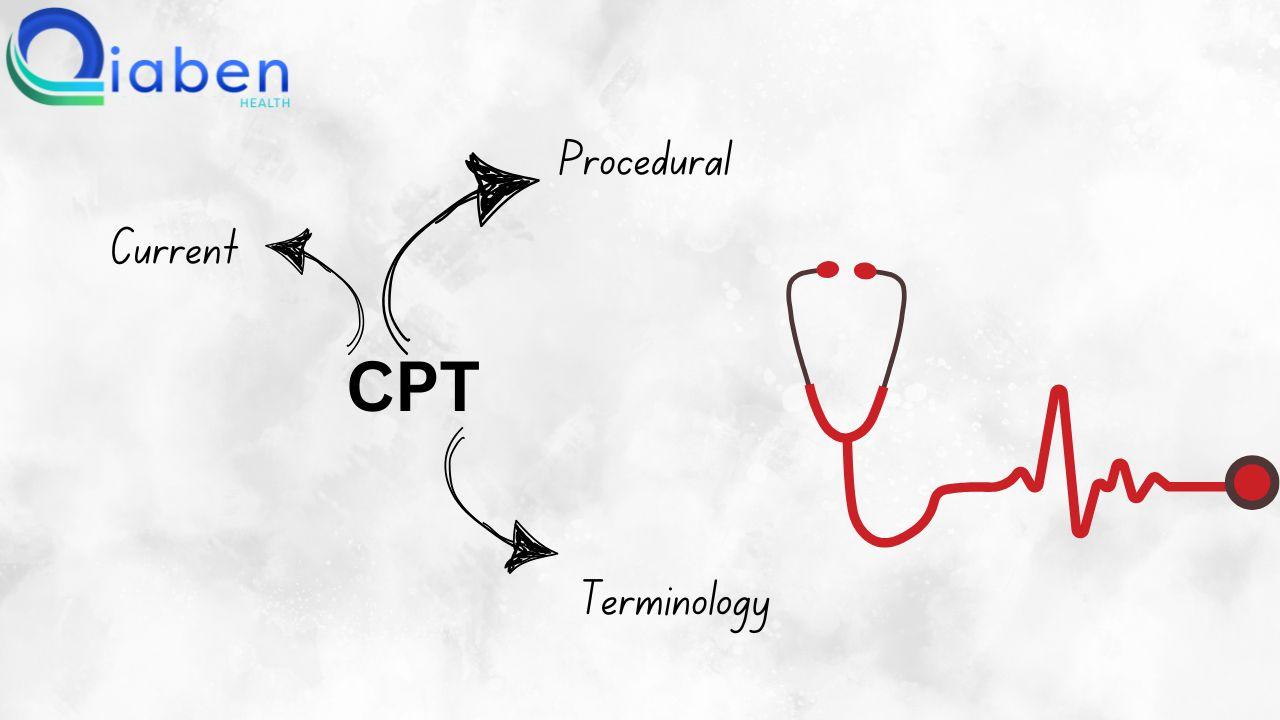The Role of EHR in Telehealth: Enhancing Remote Patient Management

1.Introduction
In today’s advanced healthcare, electronic health records (EHR) and telehealth play an essential role to improve patient care and access to healthcare. EHR in telehealth is changing healthcare by improving distant patient consideration. By coordinating computerized wellbeing records with virtual meetings, suppliers can in a flash access a patient’s finished clinical history, empowering educated, effective consideration from any area. This joining upholds progression, further develops independent direction, and at last prompts better quiet results.
i) Define EHR:
EHR is the digital record of patients’ health information. The EHR has a broad range of data, typically stored in the patient’s medical history, demographic information, and laboratory test results.
ii) Define Telehealth:
Telehealth is defined as the use of electronic information and telecommunication technologies to support long-distance clinical health care, patient and professional health-related education, health administration, and public health.
iii) Importance in Modern Healthcare:
EHR and Telehealth are important for enhancing patient care and communication, which reduces the cost. The integration of EHR with Telehealth helps the patient receive up-to-date information.
2. How EHR Supports Telehealth in Remote Patient Management
i) Access patient information:
With EHR mergers, healthcare suppliers have immediate access to the patient’s full history, like important diagnoses, medication, and early treatments. This information is essential for giving customized care during the Telehealth process.
ii) Continuous Care:
EHR continuously maintains the record of patient’s healthcare. This is important in telehealth; make sure that the supplier has a conversation with the patient and then gives access to early visitor notes, test results, and updates.
iii) Continuous Navigation:
Having an extensive EHR readily available empowers suppliers to make educated, ongoing choices during telehealth meetings. This prompt access helps guide conversations, medicines, and subsequent stages without requiring face-to-face visits.
3. Advantages of Coordinating EHR with Telehealth Stages
i) Worked on Tolerant Consideration and Coherence:
The EHR combination gives a longitudinal perspective on a patient’s wellbeing, taking into account consistency in care. For instance, if a patient sees an alternate supplier for a Telehealth visit, that supplier can, in any case, see all significant patient history and advance consistent consideration changes.
ii) Upgraded Correspondence and Cooperation:
EHR-incorporated Telehealth stages support cooperative consideration by permitting different healthcare suppliers to access and refresh patient records. This coordinated effort can be essential for complex cases that include subject matter experts, essential consideration suppliers, and psychological health experts.
iii) Diminished Regulatory Weight:
Incorporating EHR and Telehealth lessens the need to copy patient data across frameworks, accelerating work processes. For example, a patient’s solution, lab orders, or references can be immediately added to their record during a Telehealth meeting and got to during an in-person follow-up.
4. Information Security and Protection in EHR-empowered Telehealth
i) Figuring out HIPAA Consistence:
Telehealth stages coordinated with EHRs should comply with the Health Insurance Portability and Accountability Act (HIPAA) guidelines to guarantee patient information is secured. This includes utilising encoded information transmission, secure logins, and customary reviews of safety efforts.
ii) Best Practices for Security:
Carrying out security highlights, for example, multifaceted confirmation, information encryption, and normal security patches, can assist with safeguarding delicate patient data. Suppliers ought to likewise teach patients about secure Telehealth rehearsals, such as utilising private web associations.
iii) Tending to patient worries:
Numerous patients are mindful about information security in Telehealth. Tending to these worries straightforwardly by making sense of how their information is safeguarded inside an EHR-incorporated Telehealth framework can assemble trust.

5. Challenges in Coordinating EHR with Telehealth Frameworks
i) Specialised Similarity:
Numerous medical services suppliers utilise an assortment of EHR and Telehealth stages, which may not be viable 100% of the time. Custom integrations or middleware solutions are essential, but they’re a bit costly and intricate to execute.
ii) Preparing and work process changes:
For learning new things providers and administrative staff need to integrate, it can be time-consuming. Preparing is important to make sure that groups can work efficiently and use the systems to investigate normal problems.
iii) Cost and Asset Assignment:
The EHR-Telehealth combination can be a costly endeavor, especially for small practices. Costs incorporate the expense of programming, preparing, IT support, and progressing upkeep, which should be legitimate by long-haul advantages and return on initial capital investment.
6. Contextual investigations and Genuine Models
i) Model 1:
The massive healthcare network effectively integrated their EHR and Telehealth; it reduced their hospital readmissions by 30% through frequent virtual observation and streamlined follow-up care.
ii) Model 2:
A country facility embraced EHR-coordinated Telehealth, permitting them to give expert meetings to far-off patients. This contextual analysis could feature how this mix extended patient admittance to specific consideration without requiring travel.
iii) Result Measurements:
Including information focuses like patient fulfilment scores, decreased standby times, and further developed wellbeing results can exhibit the substantial advantages of EHR-Telehealth coordination.
7. Eventual fate of EHR in Telehealth: Patterns and Developments
i) Computer-based intelligence and prescient examination:
EHR frameworks are progressively incorporating man-made intelligence to anticipate patient necessities, screen wellbeing patterns, and suggest proactive mediations. This will empower suppliers to all the more likely oversee persistent circumstances through Telehealth.
ii) Blockchain for Security:
Blockchain innovation is a merging and proper way to save and share health data across platforms.Its decentralized character can improve data security and straightforwardness, particularly handling enormous telehealth data.
iii) Wearable gadget incorporation:
The incorporation of wearable gadgets with EHRs gives permission to regularly monitor patients’ health and give patients real-time data for heart rate, sleeping positions, and physical activity, which can improve Telehealth.
8.Down to earth Steps for Suppliers to Execute EHR for Telehealth
Step 1:
Platform Selection: Select an EHR and Telehealth system that offers merge with specific needs.
Step2:
Guarantee Consistency: Confirm with the chosen platforms HIPAA and other important data protection controls.
Step 3:
Preparing and Rollout: Improve a proper plan for all users and roll out the phrases, beginning with proper services.
Step 4:
Monitor and Evaluate Monitor the key metrics for patient fulfilment, arrangement volume, and productivity in understanding administration to assess the effect of the joining.
Conclusion :
- Recap of EHR-Telehealth Advantages:
Sum up how EHR reconciliation in Telehealth improves patient consideration through smoothed-out data access, better information security, and further developed supplier-coordinated effort.
- Support Investigation and Reception:
Underline that embracing EHR-coordinated Telehealth frameworks is a dynamic move toward modernised healthcare, at last helping suppliers and patients by making a more open, viable, and secure consideration environment.







